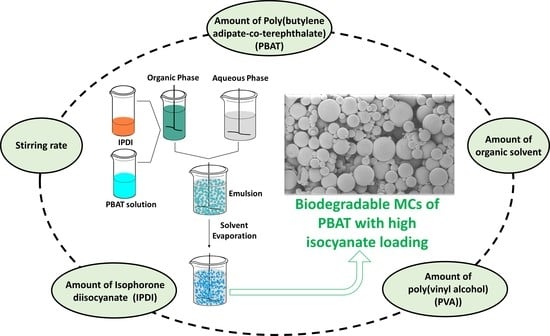Biodegradable Microcapsules of Poly(Butylene Adipate-co-Terephthalate) (PBAT) as Isocyanate Carriers and the Effect of the Process Parameters
Abstract
Share and Cite
Aguiar, A.; Mariquito, A.; Gonçalves, D.; Pinho, I.; Marques, A.C. Biodegradable Microcapsules of Poly(Butylene Adipate-co-Terephthalate) (PBAT) as Isocyanate Carriers and the Effect of the Process Parameters. Polymers 2023, 15, 665. https://doi.org/10.3390/polym15030665
Aguiar A, Mariquito A, Gonçalves D, Pinho I, Marques AC. Biodegradable Microcapsules of Poly(Butylene Adipate-co-Terephthalate) (PBAT) as Isocyanate Carriers and the Effect of the Process Parameters. Polymers. 2023; 15(3):665. https://doi.org/10.3390/polym15030665
Chicago/Turabian StyleAguiar, António, António Mariquito, Diogo Gonçalves, Isabel Pinho, and Ana C. Marques. 2023. "Biodegradable Microcapsules of Poly(Butylene Adipate-co-Terephthalate) (PBAT) as Isocyanate Carriers and the Effect of the Process Parameters" Polymers 15, no. 3: 665. https://doi.org/10.3390/polym15030665
APA StyleAguiar, A., Mariquito, A., Gonçalves, D., Pinho, I., & Marques, A. C. (2023). Biodegradable Microcapsules of Poly(Butylene Adipate-co-Terephthalate) (PBAT) as Isocyanate Carriers and the Effect of the Process Parameters. Polymers, 15(3), 665. https://doi.org/10.3390/polym15030665








